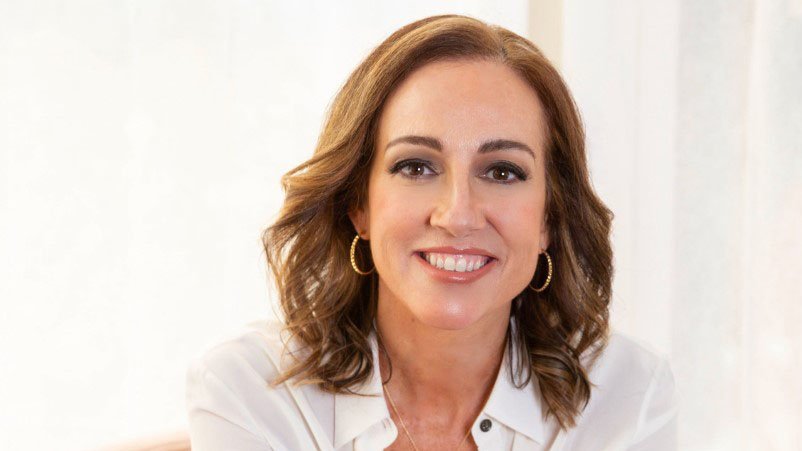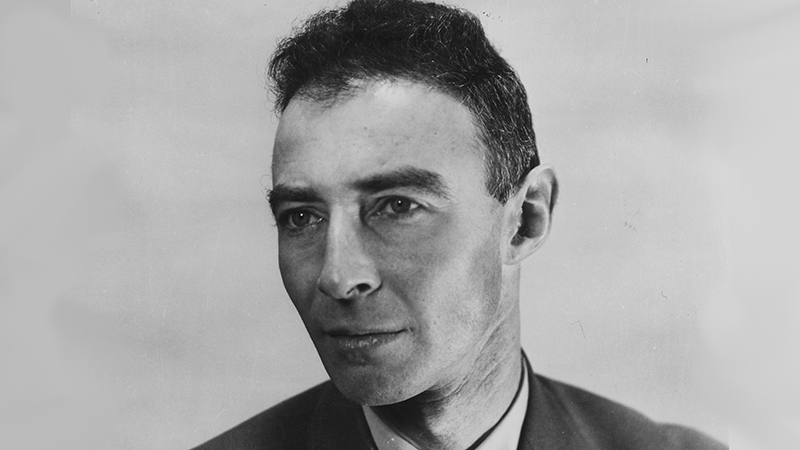Amyris, a small but fast-growing synthetic biology company, first created the position of chief sustainability officer (CSO) just this year, but the company has environmental sustainability in its DNA going back to 2003 when it was founded. CSO Beth Bannerman is now helping guide and maintain that responsible heritage.
Amyris uses synthetic biology to develop molecules that are analogous to those found in nature for a wide range of uses. Applications range widely, including anti-wrinkle skin cream, fragrances, a zero-calorie sweetener, life-saving medications, and polymers for manufacturing industries. The company says it is using biology to make abundant that which is scarce in nature. I interviewed Beth on a rainy day under the roof of a bicycle shelter across the River Clyde from the COP26 conference in Glasgow, Scotland. This is an edited version of our conversation.

Steve: For those who don’t know what synthetic biology is, please describe it.
Beth: Synthetic biology is a discipline within biotechnology that synthesizes engineering, design, and biology. Our technology enables us to produce novel molecules in addition to molecules that already exist in nature. In order to produce novel molecules, we first produce known molecules that exist in nature via fermentation and then use chemistry to convert them into novel molecules. We can also produce novel molecules by combining naturally occurring enzymes and molecules that wouldn’t typically interact together in their natural state, but our technology allows us to bring them together in a unique fashion.
Steve: One of your company’s tag lines is that you’re using biology to make what is scarce in nature abundant for all. Please explain. How does that make society more sustainable?
Beth: That comes from the idea that we can create molecules that exist in nature while avoiding depleting Earth’s resources, whether that be animals or vulnerable plants. We do this by using sugarcane as a feedstock – it’s responsibly sourced and sustainably grown from Brazil, where there’s abundant sunshine and rain water minimizes the need for additional irrigation. We can create molecules with yeast, which we program just like you program a computer. You feed the yeast sugarcane and it excretes the target molecule. We use artificial intelligence to design the target molecule. Through this process you can see how we’re able to protect the scarcity of Earth’s resources, because through synthetic biology we’re able to create an abundance of bioidentical molecules rather than harvesting them from raw sources. We have a proprietary Lab-to-Market system that enables us to scale from two liters to 200,000 liters of our target molecule. Access and scalability are key. The world needs to shift to more sustainable consumption and synthetic biology is a critical part of accelerating that transition.
Let me give you an example: One of our molecules, Squalane, is commonly used in skincare products as a moisturizing ingredient. With our fermentation-based approach, it requires the size of an 8x10ft. rug of sugarcane to produce one kilogram of Squalane. To harvest the same amount of Squalane in nature would require killing three sharks because Squalane is naturally found in the livers of sharks.

Steve: How does your high-throughput system work?
Beth: It started back in 2003 when we received a $45 million grant from The Bill and Melinda Gates Foundation to develop our first molecule. That molecule was a replica of the artemisinin, which is found in the sweet wormwood tree of China and is used to treat malaria. We partnered with Sanofi to commercialize our artemisinin molecule and it went on to save over a million children’s lives. We learned a lot from that project, and since then we have improved and optimized our platform through high-throughput screening and artificial intelligence to increase the speed of the process. In the last five years, we’ve reduced the speed of taking a molecule to market by 80% and reduced our cost by 90%. Before we made these improvements, it would take several years to develop one new molecule. We’re now at a stage where we are able to commercialize 4 to 6 molecules per year.
Before, the process was extremely manual, with scientists relying on handheld pipettes, for example, which is resource-intensive, leaves more room for inconsistencies, and doesn’t easily scale. So with over $500 million of investment in our technology, including both AI and machine learning and robotics that were designed by Amyris in house, we have significantly improved our speed. Now, we can put hundreds of thousands of yeast strains through high-throughput screening and are able to test those strains at a dramatically faster rate. The other thing that the company did was invent a Genotype Specification Language (GSL), which is a DNA programming language-based design tool invented at Amyris to accelerate the design of molecules.
Steve: What are you doing at COP26?
Beth: This is the company’s first visit to a COP summit. Ahead of the conference, they hired me as the first chief engagement and sustainability officer, and earlier this year we published our first ESG report, which many companies now do to inform investors about their environmental, social, and governance programs. The timing is good for us because we have built out a family of nine consumer brands and our consumer revenue is going to outpace our B2B ingredients revenue this year. This is an opportunity to get the attention of manufacturers and to help them disrupt the way they make ingredients. We have a climate crisis that’s not going away. Consumers are demanding sustainability – they’re much more comfortable with food and fashion and skincare that is made with biology. And, finally, we have a stage to have a conversation.
Steve: What have you achieved here that you can talk about?
Beth: We have had meetings with a variety of interesting folks who we sought out. These are manufacturers and NGOs (non-government organizations) that we’re talking to about future long-term partnerships. The surprising development is that we have received attention from manufacturers that we didn’t reach out to before the conference. We can’t claim success yet, but it starts with a conversation.
Steve: Among the people in Glasgow who are not allowed inside the gates of the official Blue and Green zones, there’s a lot of skepticism about both government and business. We hear a lot of pledges, but will action really follow? Do you think that the business community is doing enough about making the world a safer and more survivable place?
Beth: The answer is unequivocally “No.” Businesses can do a lot more than they’re doing right now. Before we published our ESG report, we were concerned that it might be seen as a veneer trying to get approval for work that actually wasn’t getting done. Potentially, it was a vanity exercise. But after talking to a number of ESG investors and listening to what consumers are demanding in the way of transparency, we decided that in order for us to tell our great story, we needed to back it up with data. So we have done that. We not only set our three goals but laid out a road map for achieving them. One of our goals is to get to net zero carbon emissions by 2030. We spelled out all the steps we need to take to get to that place.
Another thing we did is launch our first ESG council, which is made up of executives from across the enterprise. This is a group of folks who have very clear accountabilities to help drive toward the goals. This is our opportunity, win or lose.
Steve: Are you saying that other companies should do the same?
Beth: Yes. We have a market cap of $3.7 billion. We’re not one of the big players yet. It’s difficult for a small company to split its focus and focus on sustainability. That said, I would encourage small companies to do this. Investors are no longer just looking at growth plans. They want to see sustainability plans, and these things can’t just run in parallel; they have to be integrated and woven together.
—
Steve Hamm is a freelance writer and documentary filmmaker based in New Haven, Connecticut, USA. His new book, The Pivot: Addressing Global Problems Through Local Action, about the journey of Pivot Projects, was published in October by Columbia University Press. This is one of a series of dispatches from COP26.
Read more from Steve Hamm’s COP26 Dispatches
October 29th: COP26: Let’s Pivot to Save the Planet
November 1: SustainChain: a Collaboration Platform for Do-Gooders
November 3: How Oil-Rich Aberdeen is Pivoting Away from Fossil Fuels
November 5: Glasgow Dispatch: Startup Funding Encourages Sustainability
November 8: Can Better Town-Gown Relations Help Save the Planet?
November 8: Young People Are Watching, and They’re Pissed Off
November 9: Piloting Big Technologies On a Tiny Scottish Island
















